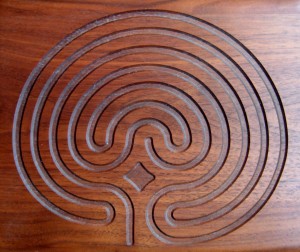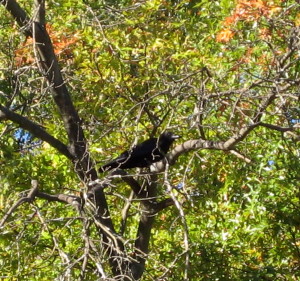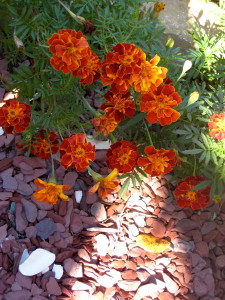
to trace or walk,
to calm or intend change…
– Photo by Jan Ketchel
The borders of the world are swiftly evaporating as we swirl ever so rapidly into our One World family. This transformation has been heralded by the diaspora of formerly-cloistered knowledge and practices of the world’s most ancient spiritual traditions.
Tibet is a regular at the White House now, in the form of the Dalai Lama’s chats with the President. Mindfulness has infiltrated into the core of brain research at major universities and is at the heart of modern psychotherapeutic treatment. The technologies of the Upanishads and the wisdom of the ancient Hindus is available in most adult ed programs, and in storefronts in most cities in the world, in the form of yoga practice. The energetic medicine of the ancient Chinese, in the practice of acupuncture, is now covered under most health insurance plans. The knowledge and methods of the Shamans of Ancient Mexico are readily available, to anyone seeking to deepen their energetic evolution, through the published works of Carlos Castaneda.
The age of exclusive godly gurus and saviors is over, at least in projected form. Even the Catholic Pope admitted to his human frailty when having to prematurely retire. The Dalai Lama’s successor is dubious; Carlos Castaneda ended his shamanic line; India is steeped in desecration of the feminine, and China has forgotten the I Ching.
The legacy, the deepest gold of these ancient fading traditions, lies in their technologies, offering pathways to the soul. These methodologies, stripped of their proprietary and ritual wrappings are now available to anyone who chooses to engage in their practices. It is true that we still need teachers and guides as we experiment with these ancient practices. For instance, Kundalini, the powerful instinctive energy that lies coiled like a snake at the base of the spine in all of us, once activated, can wreak havoc with the central nervous system, such as triggering a physical recapitulation that may confusedly land one in the emergency room! It is wise to proceed with caution and seek out experienced guides and helpers for these practices.
But, by and large, our greatest guide is our own resonance. The teachers and teachings that are synchronistically drawn to us and resonate with our own energy are most likely to be trusted. We are all guided now by our own inner Naguals—the title afforded, in earlier times, to the leader of a shamanic party. No one else’s rules or resonances necessarily apply to our own journey. And that journey can take many different roads.
Many people value the concept of meditation. In fact, it’s at the top of many a New Year’s resolution scroll. Most, however, find its actual practice daunting or frustrating. When TM, Transcendental Meditation, was the rave in the 1970s, Dr. Herbert Benson, in his lab at Harvard, discovered the Relaxation Response, a simplified, demystified 10 minute practice that achieved the same physical and emotional benefits as the ancient esoteric mantras of TM. There are many simple roads to meditation, like washing the dishes with full mindful presence.

– Photo by Jan Ketchel
The ancient Tibetans and Navaho Indians used sand paintings of mandalas to heal and commune with deep spiritual forces. Carl Jung had his patients paint mandalas to connect with the healing support of their own deep unconscious during analysis. When I seek such a connection, I will simply walk slowly in a circle, then in a square, touching four points of that circle. In this simple gesture the energetic pathways to the deeper self are opened. A calm walk on a simple labyrinth can facilitate a similar experience.
The other day, Jan offered a recorded hypnosis to easily shift awareness and access deep calm from the sacred within. Hypnosis is one of those ancient practices: “En arche en ho lógos (John 1:1);” “In the beginning was the word.” And with words we construct our worlds and commune with our deepest spiritual forces. When we choose our words wisely, the words we take in and the words we exhale can invite in benevolent and compassionate energies to support and guide our journeys. It’s all in the word. A simple calm word can change the structure of water and what it does to us; it can become healing balm.
Partake in the simply sacred with the guides and practices that resonate. Trust your inner Nagual. Peace.
On the simple path,
Chuck









